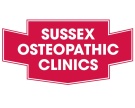My patients often hear me talk about “fascia” – the thin fibrous body suit that covers and connects all the tissues of the body, including muscles, joints and internal organs. For the carnivores amongst you, you will have seen it as the thin white membranes between the sections of lamb chop.
Fascia is one of the reasons why it is never as effective to just treat the area of pain; a therapist must look further afield as well to really unravel a problem. Everything is connected; no part is isolated or exempt.
So you will notice that I mentioned above that internal organs are wrapped in this white fibrous layer too. This layer then extends to the surrounding structures, for example the fascia surrounding the heart will indirectly or directly attach to ribs, muscles, lungs, the spine and further afield. Everything blends and each internal organ has a fascial connection to the spine.
So might manipulating the viscera (internal organs) that attach to the lower back help with low back pain?
Visceral Manipulation was developed by Jean-Pierre Barral, a physical therapist and osteopath. He observed that any structure that crosses and joint has the ability to restrict that joint. It is certainly accepted that this is true for muscles, but he suggests it is also true for organs. Barral’s in-depth study of patterns of stress in the tissues of cadavers led him to recognise the potential for the organ system to create lines of tension within the body.
Organs can become restricted via direct trauma, acute/chronic illness (eg. pneumonia, irritable bowel syndrome), absorbing the force of a road motor vehicle accident (seat belt trauma), chronic emotional stress or scar tissue formed after surgery.
We take approximately 24,000 breaths a day and our heart beats 120,000 times per day. Like muscles and joints, organs too need to be able to move to stay healthy. Any lack of mobility in these structures could promote chronic spinal restrictions.
The key to Visceral Manipulation is the find the most significant areas of reduced mobility. A restriction will pull the surrounding tissue towards it. With training and experience, the pull of these tissues can be felt with your hands and gently released.
I use visceral osteopathy as part of my every day practise in treating a wide range of problems, especially back pain and restriction, digestive complaints and reflux.
If you are interested in learning more about Visceral Manipulation there is more information on the Barral Institute website. I am always happy to answer any questions or to discuss whether treatment is right for you, so please just get in touch if you are in any doubt!


